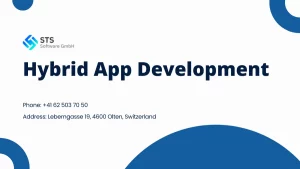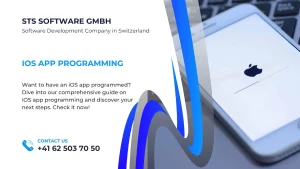Flutter and React Native are two leading frameworks for cross-platform development. While Flutter stands out with its single codebase for multiple platforms, React Native facilitates code sharing to optimize the development process.
In 2024, when the competition between businesses becomes more intense, companies need to compare Flutter vs React Native and find the best solution for their projects. This article will offer a side-by-side comparison, exploring their strengths and weaknesses to determine the winner. So, let’s read on to discover!
Background on Flutter and React Native

According to Statista, Flutter is the most popular framework, with 46% of software developers worldwide. React Native ranks second on the list. These two frameworks differ in multiple terms, requiring developers to check their features and performance carefully before picking up the best one for their projects.
What is Flutter?
Flutter is a comprehensive UI kit designed to create native apps for mobile, desktop, and web from a single codebase. Many enterprises like Alibaba and Hamilton choose this framework for their app development.
Development and Ownership
Google developed Flutter, which was first released in 2017. Since then, it has become popular among developers due to its ease of use, high performance, and extensive libraries of pre-built features.
Core Features
Flutter is famous for its advanced features, including the following:
- The use of Dart: Dart is a programming language designed for robust features, fast reload capabilities, native code, and smooth user interfaces.
- Widget-based architecture: In Flutter, widgets are UI blocks composed of a tree structure. Developers use them to build complex UIs and tailor their appearance to match their needs.
- Hot reload: This feature allows developers to check the code changes almost instantly without restarting the app.
What is React Native?
React Native is an open-source framework based on JavaScript. It enables developers to use the same codebase for cross-platform apps. Skype and Instagram use this framework for their app development.
Development and Ownership
React Native, developed by Facebook, was first released for iOS, with Android support starting later. This dual-platform support enhances productivity and consistency across platforms.
Core Features
React Native uses JavaScript, native components, and live reload features:
- The use of JavaScript: JavaScript is one of the most popular programming languages. Hence, developers can take advantage of its large community, rich ecosystem, and ease of learning.
- Native components: Developers can also use native components within their JavaScript code to provide a truly native look and feel.
- Live reload: Developers will instantly see the changes they make in their code without waiting for the app to load, making the development process faster and more efficient.
Performance Comparison
Flutter offers outstanding performance with faster startup times and smoother runtime. React Native provides solid performance but can be slower due to the JavaScript bridge.
Speed and Efficiency
Comparing Flutter vs React Native performance, Flutter is faster because it offers pre-built UI components and the use of Dart language. All these features allow for quick initial loading.
Flutter also provides superior runtime performance by compiling directly to native code, eliminating the need for intermediary bridges.
On the other hand, React Native also offers quick startup times, but the reliance on a JavaScript bridge may bring about some latency, especially for complex apps. Moreover, the bridge creates a bottleneck that requires frequent interaction between JavaScript and the native code, making it more time-consuming than Flutter.
Memory Usage
Apps developed with Flutter often have higher memory usage compared to their native counterparts. More specifically, its memory usage can be almost 50% higher than that of a native app.
Flutter’s widget-based architecture allows for efficient management of UI components. Developers who worry about Flutter app size comparison can also use techniques like lazy loading to allocate memory efficiently.
Meanwhile, React Native apps are only a little bit more memory-hungry than native apps. It comes with performance profiling tools like the React Native Performance Monitor to help profile the app’s memory usage effectively.
Development Experience
The Dart programming language of Flutter offers impressive performance, but its learning curve is steep. Meanwhile, React Native has the familiar JavaScript for easy adoption and access to a mature ecosystem.
Language and Syntax
The difference between Flutter and React Native comes from the language. Flutter uses Dart, which has a steeper learning curve due to its lesser popularity than JavaScript. However, Dart’s strong typing provides robust performance that benefits developers focusing on high-performance apps.
React Native uses JavaScript, making it easier to adopt. Developers can also seek help from its vast community.
Tooling and Libraries
Another difference between React Native and Flutter is the IDE support. Flutter offers excellent support with the Flutter SDK and tools integrated into popular IDEs, providing robust development features.
React Native uses React Native CLI and Expo, which are also well-supported in many IDEs. Moreover, developers can access the vast, mature JavaScript ecosystem to take advantage of the numerous libraries.
UI and UX Capabilities
Flutter has robust UI/UX capabilities with custom widgets, whereas React Native excels in using native components and third-party libraries.
Design and Customization
Flutter offers a unique set of custom widgets for UI and UX development. With Material Design and Cupertino libraries, this framework ensures your app looks and works consistently across platforms.
Furthermore, the difference between React Native and Flutter lies in Flutter’s ability to mimic native components. Developers can also create and customize new widgets effortlessly to enhance design consistency.
In contrast, React Native uses native components and APIs to integrate existing code as JavaScript modules manually. This approach ensures the app components look like native ones.
Animations and Graphics
Flutter offers a purpose-built graphics system to render the widgets, making it easy to implement complex animations across all operating systems and devices. Developers also love its rich set of built-in animations that simplifies the design process. However, this framework lacks direct support for 3D graphics.
On the contrary, React Native provides tools like Animated API and libraries like Reanimated. The support for 3D graphics offers more flexibility for graphic-intensive apps. Even so, developers find it challenging to implement complex animations due to the framework’s reliance on native bridges.
Community and Ecosystem
React Native outweighs its competitors with its large community, mature plugin library, and extensive resources. Flutter, despite its smaller size, is expanding its ecosystem.
Community Support
Because Flutter is a new framework, it has a smaller community than React Native. Yet, Flutter still offers comprehensive documentation, detailed tutorials, and a growing number of learning resources.
React Native, with a longer history, boasts a larger community. It provides an extensive user base and abundant resources.
The comparison between Flutter and React Native shows Flutter’s growing community, while React Native’s vast ecosystem leads to active community support.
Ecosystem and Plugins
Flutter, with its growing ecosystem, provides a wide range of plugins and extensions to develop robust solutions for various functionalities. It also receives frequent updates and contributions from Google and the developer community.
On the other hand, React Native has a more mature and extensive plugin ecosystem. Plus, users enjoy regular updates and community contributions, benefiting from Facebook’s support and a large developer base.
Flutter vs React Native: Case Studies and Industry Use
Comparing React Native vs Flutter, both frameworks have powered many impressive apps. This comparison explores notable success stories from each.
Popular Apps Built with Flutter
In the Flutter vs React Native debate, BMW stands out. In 2020, this company launched its highly functional, lightweight My BMW app. Available for Android and iOS, the app allows users to control their vehicles remotely.
Toyota has integrated Flutter into its system, too. Like BMW, the company demonstrated Flutter’s suitability for embedded systems in the automotive industry.
Etsy, a leading e-commerce platform for handmade products, also uses Flutter to accelerate its app development process. The company enhances its app’s functionality to create a robust platform for its sellers and ensure a consistent user experience.
Popular Apps Built with React Native
As one of the world’s largest retail businesses, Walmart uses React Native to upgrade its app’s user experience. This adoption helps improve performance and streamline updates to provide users a more seamless shopping experience.
Another success story of using React Native is Instagram. This framework allows Instagram to share up to 90% of the code between Android and iOS, enabling fast app delivery.
Pros and Cons
Flutter and React Native have their own set of pros and cons. The choice between the two depends on specific project requirements. Businesses need to compare Flutter and React Native carefully to opt for the best.
Flutter
When evaluating the advantages of Flutter over Reactive Native, consider its pros and cons as follows:
Advantages:
- Unified codebase: The unified codebase allows developers to use one code for web and mobile apps, reducing development time and effort.
- UI consistency: Flutter gives an exact UI look and behaviors across different platforms.
- High performance: Flutter apps provide near-native performance and enable fast execution of code.
- Rapid development: Features like hot reload and pre-built widgets contribute to quick development cycles.
Disadvantages:
- Learning curve: Dart has a steeper learning curve.
- Maturity: Flutter is evolving, leading to possible limitations and bugs.
- Size: The initial app size is large and may affect load times.
React Native
The advantages of React Native over Flutter make it perfect for specific needs, but its disadvantages are worth considering.
Advantages:
- Consistent code: React Native has consistent code sharing between platforms.
- Familiarity: Developers can use their existing knowledge and skills of JavaScript to transition to React Native.
- Component-based: The component-based architecture of React Native enables developers to create modular components, enhancing code maintainability.
- Community: The large and active community provides extensive resources and libraries to accelerate development.
Disadvantages:
- Performance: React Native may not match the performance of native frameworks due to its JavaScript bridge.
- UI/UX design: Compared to Flutter, React Native lacks custom elements for app development.
- Web-nativity: Developers find it tricky to achieve full web-native functionality.
Future Prospects
Both Flutter and React Native have promising future prospects. They also strive to maintain regular updates to keep users engaged.
Roadmap and Updates
The competition between Flutter and React Native becomes more intense when both frameworks update themselves regularly to offer developers and users the best features.
Flutter’s recent updates, such as the Flutter 3.22 release, highlight its commitment to improving developer experience and enhancing capabilities. Key advancements include stable Web Assembly support and DevTools updates for better Android deep link validation.
React Native also has recent updates, giving access to new APIs and developer tools. Projects using Expo benefit from SDK upgrades for stability. React Native’s roadmap prioritizes platform parity to ensure developers have tools to enhance their apps.
Industry Trends
The decision between Flutter or React Native involves industry trends, with Flutter gaining traction and React Native maintaining its strong position.
Although newer, Flutter shows promising adoption with a high user satisfaction rate among developers. Google continues to invest and improve this framework, encouraging companies to recognize its performance benefits and cross-platform capabilities.
React Native is driven by its strong community. This framework will continue growing. Its integration with popular web technologies will sustain its popularity in mobile development.
Conclusion
Businesses need to consider the difference between Flutter and React Native to make an informed decision. While Flutter impresses with its native performance, React Native offers extensive community and cross-platform capabilities.
So, which framework should you choose? For projects demanding high-performance apps, Flutter may be the better choice. Alternatively, React Native is ideal for seamless web integration.
The final choice between Flutter or React Native depends on project requirements and team preferences. Share your thoughts on which framework suits your needs best in the comment section below. Let’s see which dominates the industry!



